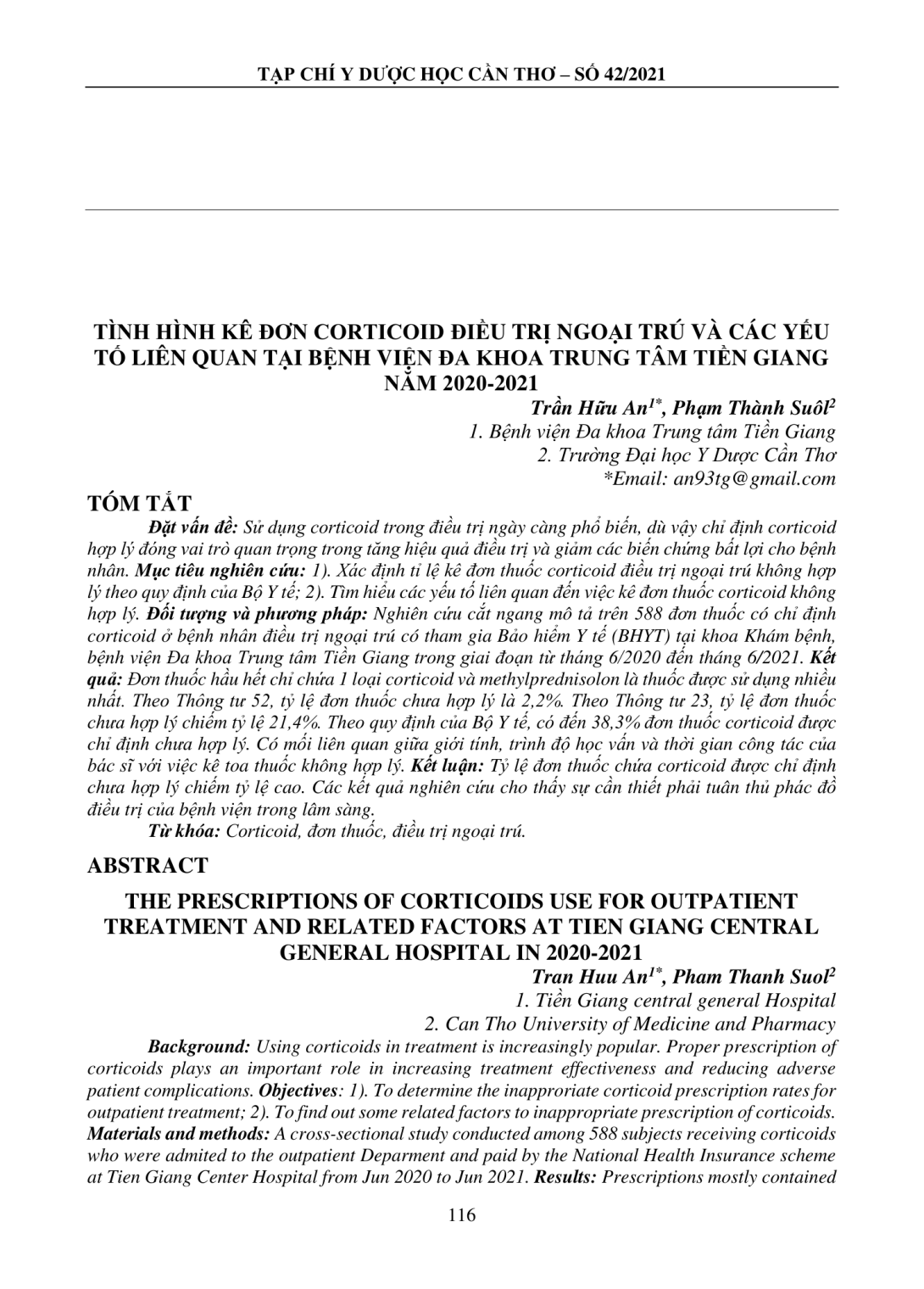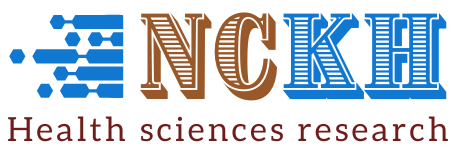
Sử dụng corticoid trong điều trị ngày càng phổ biến, dù vậy chỉ định corticoid hợp lý đóng vai trò quan trọng trong tăng hiệu quả điều trị và giảm các biến chứng bất lợi cho bệnh nhân. Mục tiêu nghiên cứu: 1). Xác định tỉ lệ kê đơn thuốc corticoid điều trị ngoại trú không hợp lý theo quy định của Bộ Y tế; 2). Tìm hiểu các yếu tố liên quan đến việc kê đơn thuốc corticoid không hợp lý. Đối tượng và phương pháp: Nghiên cứu cắt ngang mô tả trên 588 đơn thuốc có chỉ định corticoid ở bệnh nhân điều trị ngoại trú có tham gia Bảo hiểm Y tế (BHYT) tại khoa Khám bệnh, bệnh viện Đa khoa Trung tâm Tiền Giang trong giai đoạn từ tháng 6/2020 đến tháng 6/2021. Kết quả: Đơn thuốc hầu hết chỉ chứa 1 loại corticoid và methylprednisolon là thuốc được sử dụng nhiều nhất. Theo Thông tư 52, tỷ lệ đơn thuốc chưa hợp lý là 2,2%. Theo Thông tư 23, tỷ lệ đơn thuốc chưa hợp lý chiếm tỷ lệ 21,4%. Theo quy định của Bộ Y tế, có đến 38,3% đơn thuốc corticoid được chỉ định chưa hợp lý. Có mối liên quan giữa giới tính, trình độ học vấn và thời gian công tác của bác sĩ với việc kê toa thuốc không hợp lý. Kết luận: Tỷ lệ đơn thuốc chứa corticoid được chỉ định chưa hợp lý chiếm tỷ lệ cao. Các kết quả nghiên cứu cho thấy sự cần thiết phải tuân thủ phác đồ điều trị của bệnh viện trong lâm sàng
Using corticoids in treatment is increasingly popular. Proper prescription of corticoids plays an important role in increasing treatment effectiveness and reducing adverse patient complications. Objectives: 1). To determine the inapproriate corticoid prescription rates for outpatient treatment; 2). To find out some related factors to inappropriate prescription of corticoids. Materials and methods: A cross-sectional study conducted among 588 subjects receiving corticoids who were admited to the outpatient Deparment and paid by the National Health Insurance scheme at Tien Giang Center Hospital from Jun 2020 to Jun 2021. Results: Prescriptions mostly containedonly 1 type of corticoid and methylprednisolone was the drug most used. According to Circular 52, the proportion of unreasonable prescriptions accounted for 2.2%. According to Circular 23, the proportion of unreasonable prescriptions was 21.4%. According to regulations of the Ministry of Health, it was 38.3% of unreasonable prescriptions. Associated factors with unreasonable prescriptions included gender, professional qualification and years of experiences of prescribing doctors. Conclusion: The rates of prescription containing corticoids prescribed unreasonably is high. Results from the study suggested the implementation of adherence to treatment guidelines in clinical settings.
- Đăng nhập để gửi ý kiến
